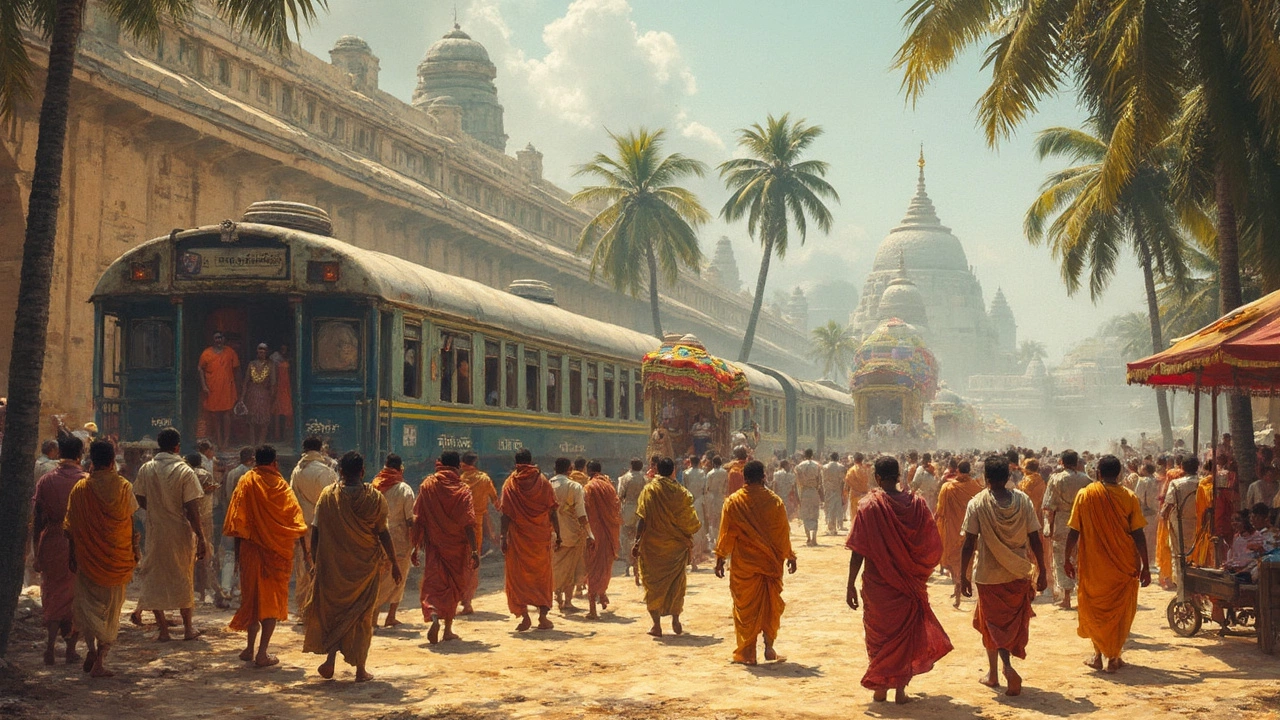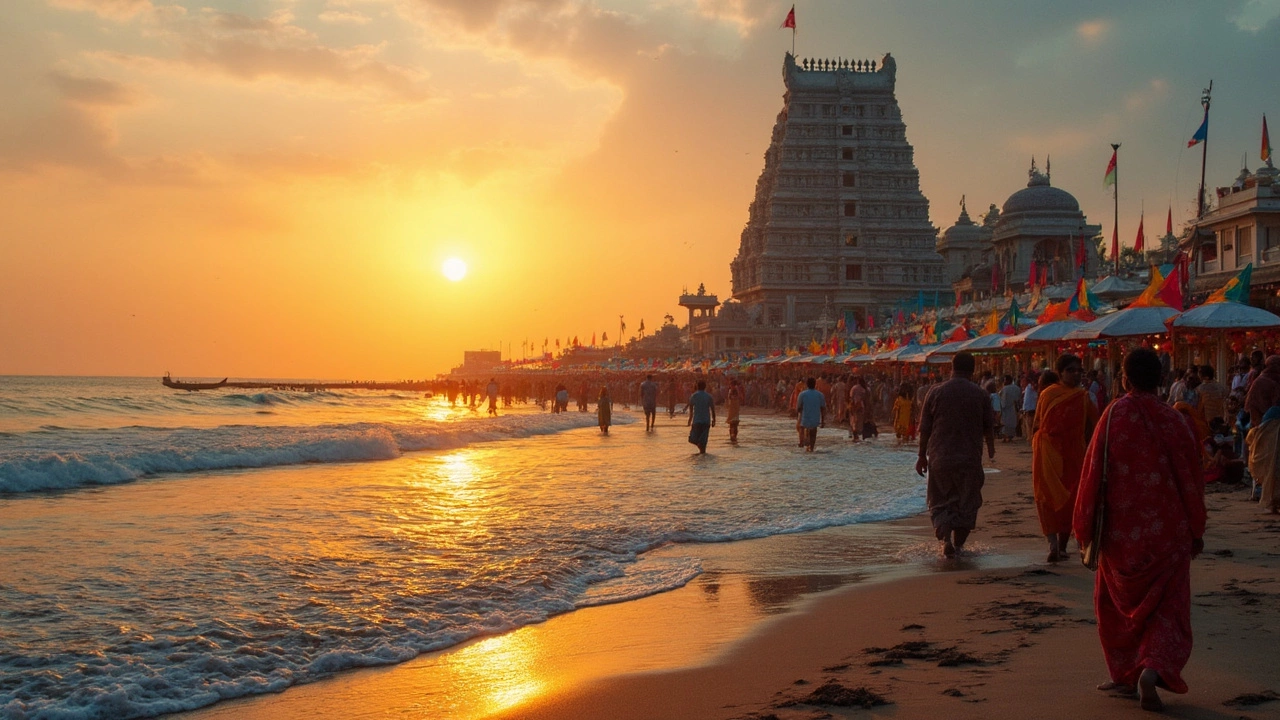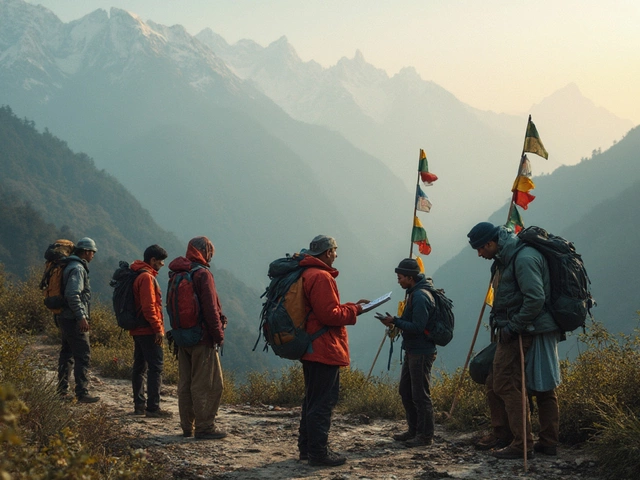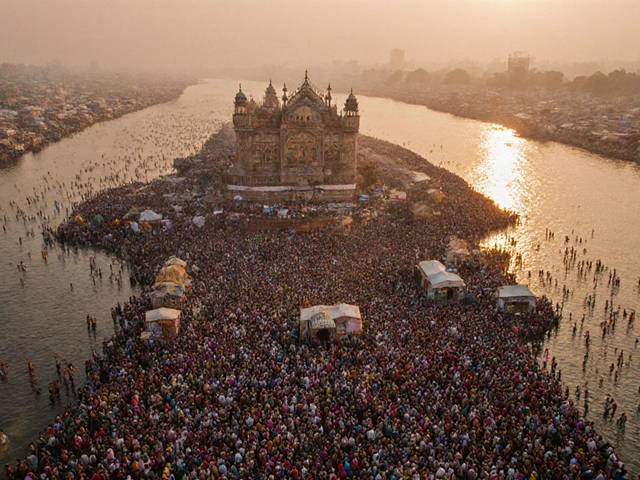Ever heard the confusion over whether Rameshwaram is a Dham, a Jyotirlinga, or maybe both? You’re not alone. Loads of people set out on temple tours in India without knowing what these labels even mean. If you’re thinking about a pilgrimage—or just a good old sightseeing trip—you’ll want to clear this up before booking those tickets.
Rameshwaram is more than just another spot on the temple map. It pulls in thousands of visitors all year, partly because it's wrapped in legends and partly because it holds a special place in two major spiritual lists. The terms Dham and Jyotirlinga aren’t random—they actually mean a lot to anyone mapping a religious journey in India.
The fun part? Rameshwaram actually checks both boxes. That’s rare. So if you’re looking to hit multiple big-ticket pilgrimage sites in one go, this is definitely one for your bucket list. And knowing exactly why people flock here can make your trip way more meaningful, not just a checklist stop.
- What Makes Rameshwaram Special?
- Rameshwaram as a Dham: The Southern Gateway
- The Story of Rameshwaram Jyotirlinga
- Why This Double Status Matters
- Travel Tips for Visiting Rameshwaram
What Makes Rameshwaram Special?
If you ask anyone who’s been on a serious Rameshwaram trip, they’ll tell you there’s nowhere quite like it. This little town is perched on Pamban Island, right near the southern tip of India, making it feel almost like you’ve reached the edge of the country. To get there, you actually cross a cool, old railway bridge with a view that’s hard to beat—kids and adults both stick their heads out for a snap.
What puts Rameshwaram high on most temple tour lists? First, the Ramanathaswamy Temple is famous for having probably the longest corridor of any Hindu temple in India—those massive pillared halls go on forever. Pilgrims come to take a dip in 22 holy wells inside (each said to wash away sins or bad luck). If your goal is to fulfill religious duties or just soak up local culture, that alone is enough reason to visit.
This place is also known because it’s linked with the epic Ramayana—legend says Lord Rama built a bridge from here to Sri Lanka to rescue his wife. That story alone draws people in, whether they’re die-hard believers or just history junkies.
- Rameshwaram is one of the four “Dham” sites in India’s famous Char Dham pilgrimage circuit, holding its own alongside Badrinath, Dwarka, and Puri.
- It’s also home to one of the twelve Jyotirlinga shrines dedicated to Shiva, which are considered super holy.
- Locals rely on tourism, fishing, and some basic trade, but just walking through the town, you notice that life revolves around the temple and its visitors.
Check this out—Rameshwaram isn’t just popular with Indian pilgrims. Lots of tourists from all over the world show up curious about the epic stories, bright temple colors, and unique rituals. If you’re planning a South Indian tour, it’s usually one of the first stops recommended for both spiritual value and straight-up travel excitement.
| Annual Pilgrim Visits | Char Dham Position | Main Temple Dedication |
|---|---|---|
| Over 2 million | 4th Dham (South) | Lord Shiva (Jyotirlinga) |
Rameshwaram as a Dham: The Southern Gateway
When folks talk about the Rameshwaram Dham, they’re talking big league. Out of all the holy places in India, only four make it into the elite list called the Char Dhams. These are the country’s spiritual cornerstones—Badrinath in the North, Dwarka in the West, Puri in the East, and yep, Rameshwaram down South. This isn’t just about geography; it means Rameshwaram holds special weight for anyone on a spiritual quest.
So what marks a spot as a Dham? In Hindu tradition, Dhams are places you’re supposed to visit for spiritual growth. Pilgrims believe a trip to all four can wash away lifetimes of baggage. For South Indians especially, Rameshwaram often becomes the starting or finishing point for their Char Dham yatra because of its location right at southern tip of Tamil Nadu, just across the sea from Sri Lanka.
This temple town is built around the Ramanathaswamy Temple. What’s wild is, it’s got one of India’s longest temple corridors—think 1,200 massive pillars running over 1,000 meters. Plus, there are 22 sacred wells where devotees take a dip, and locals say each well’s water tastes different. There’s no magic behind it—just local geology and a few centuries of stories stacked on top.
- How to reach Rameshwaram? The place is well linked by train and road. The Pamban Bridge, a big draw itself, lets you experience riding or walking over India’s oldest sea bridge.
- Best time to visit: October to April is comfortable and less sweaty. Summers here are blazing.
- Cultural spots: Don’t miss the Gandhamadhana Parvatham, a two-storey hall said to hold Lord Rama’s footprints, or Dhanushkodi, a ghost town at the very tip that got wiped out by a cyclone in the 1960s but makes for crazy-cool photos today.
Here’s a quick look at the Char Dham circuit to see where Rameshwaram fits in:
| Dham | Direction | State |
|---|---|---|
| Badrinath | North | Uttarakhand |
| Dwarka | West | Gujarat |
| Puri | East | Odisha |
| Rameshwaram | South | Tamil Nadu |
So, whether you’re looking for blessings, history, or just bragging rights, Rameshwaram as a Dham is a must-see on your temple tour list. It’s not hype—it’s tradition, location, and pure experience rolled into one.

The Story of Rameshwaram Jyotirlinga
Ask anyone who’s even a little into temple tours, and the term Jyotirlinga will pop up fast. There are 12 Jyotirlingas in India, and Rameshwaram holds one of them. That’s a big deal if you’re chasing major pilgrimage stops. The Jyotirlinga at Rameshwaram is known as the Ramanathaswamy temple's Shivling, sitting right in the heart of this coastal town.
But why does it matter? Well, Jyotirlingas are special shrines where people believe Lord Shiva showed up as a beam of light. Rameshwaram’s story goes back to the Ramayana. The legend says Lord Rama, after defeating Ravana, wanted to worship Shiva to cleanse himself. But he didn’t have a Shivling handy, so Hanuman was sent off to the Himalayas for one. He took too long (classic Hanuman move), so Sita made a sand Shivling instead, and Rama offered prayers right there. That’s the sacred spot you see now.
What sets the Rameshwaram Jyotirlinga apart from others is this double whammy: strong ties to both Shiva and Vishnu traditions. Most other Jyotirlingas focus just on Shiva, but here, there’s a vibe that includes both, making it a bit of a spiritual crossover event.
The main temple, called Ramanathaswamy Temple, is huge and has the longest corridor among all Hindu temples in India—over 1,200 meters of hallway! It draws crowds, especially in July-August during Maha Shivaratri and other local festivals. Local guides claim roughly 5,000 to 6,000 people visit every single day in peak season.
| Fact | Detail |
|---|---|
| Location | Rameshwaram, Tamil Nadu |
| Features | One of 12 Jyotirlingas, longest temple corridor in India |
| Peak Visits | Up to 6,000 people per day in high season |
| Main Festival | Maha Shivaratri |
If you’re planning a visit, arrive early in the morning to avoid the biggest lines. Make sure to check temple timings since they can change during festivals. Don’t miss doing a round of the 22 sacred wells inside the complex—folks believe a dip in these waters can wash away all sins, and it’s almost expected by locals and pilgrims alike.
Knowing why Rameshwaram is a Jyotirlinga destination helps you appreciate not just its temple, but its deep spot in Indian spiritual history. It’s not just about seeing another ancient site—it’s about standing where age-old legends come alive.
Why This Double Status Matters
If you love checking off major holy sites, Rameshwaram’s double claim as both a Dham and a Jyotirlinga is a rare win. There aren’t many places in India with that combo, and that’s a big reason why temple tourists and devoted pilgrims both circle this spot on their maps. Let’s break down what this means for you.
First, a “Dham” refers to one of the Char Dhams—the four famous sites every Hindu is supposed to visit in their lifetime. Anyone chasing these four legendary places heads south toward Rameshwaram as their big coastal stop. On the flip side, “Jyotirlinga” describes one of twelve iconic Shiva temples, and out of all the grand Jyotirlingas, only a handful overlap with other massive pilgrimage circuits. Rameshwaram’s Ramanathaswamy Temple is a prime example.
This double status turns Rameshwaram into a must-see whether you’re focused on Jyotirlinga tours or ticking off the Dham list. Killing two birds with one stone? Totally possible here, and it saves you travel, time, and money. For folks coming from far away or short on vacation days, visiting Rameshwaram is an efficient way to honor both sets of traditions at once.
If you’re into numbers, temple authorities estimate that over 1.5 million devotees drop by every year just because of this dual identity. During festival seasons—like Maha Shivaratri—you’ll find the temple packed, with people lining up from the crack of dawn.
| Distinct Feature | Other Locations | Rameshwaram |
|---|---|---|
| Char Dham site | 3 more (Badrinath, Puri, Dwarka) | Yes |
| Jyotirlinga site | 11 others (e.g. Somnath, Kashi Vishwanath) | Yes |
| Dual Status | Rare/None | Yes |
So, if a powerful spiritual vibe and rich history are what you want, Rameshwaram delivers more bang for your buck. Whether you’re serious about pilgrimage or just making the most of your temple tour through India, this spot is seriously practical—and meaningful—to add to your route.

Travel Tips for Visiting Rameshwaram
If you’re planning a trip to Rameshwaram, getting the details right can make the whole experience smoother. This isn’t just another beach town—between its spiritual pull and busy crowds, you’ll want to go in with a game plan. Here’s what will actually help when you land in town.
- Best time to visit: October to April is prime. The temperatures are a lot more forgiving, and you’ll avoid both the harsh monsoon and the heat waves. Trust me, temple walks feel longer under the hot sun!
- Getting there: You can fly into Madurai, about 170 km away. From there, cabs and regular trains connect straight to Rameshwaram. If you’re into trains, crossing the Pamban Bridge is one for the bucket list—it’s pretty epic when the sea wind hits your face and you see those turquoise waves below.
- Dress code: The temple has strict rules. Traditional Indian clothes work best. No shorts or sleeveless tops, and men are often asked to remove shirts before entering main sanctums. Bought a new kurta? Perfect excuse to wear it.
- Pilgrim rituals: If you’re planning to do the 22 “theerthams” bathing ritual, bring a change of clothes and lightweight towels. The queues are longer in the morning, but it’s worth getting up early to beat the rush.
- Local eats: Don’t skip a South Indian breakfast near the temple—idlis and filter coffee are practically a morning ritual here.
- Nearby spots: Squeeze in visits to Dhanushkodi or the sea bridge. Dhanushkodi has a wild, untouched vibe because it’s half ghost town, half beach, just 18 km from the Jyotirlinga site.
- Staying connected: Mobile signals are pretty reliable in town, but Wi-Fi can be spotty in budget hotels. Download maps and essential info before you arrive.
Traveling with family or pets? While the temple won’t allow pets inside (sorry, Max had to stay home last time), many hotels are pet-friendly if you ask ahead. Also, carrying cash helps as a lot of small hotels and roadside stalls won’t accept cards or digital payments.
| Estimated Pilgrim Footfall (Annual) | Average Hotel Price (INR/night) |
|---|---|
| Over 2 million | Rs 1,500 - 4,500 |
One last tip: Book accommodation and temple darshan slots online if possible, especially around festivals, or you’ll be stuck hunting for rooms last-minute.



